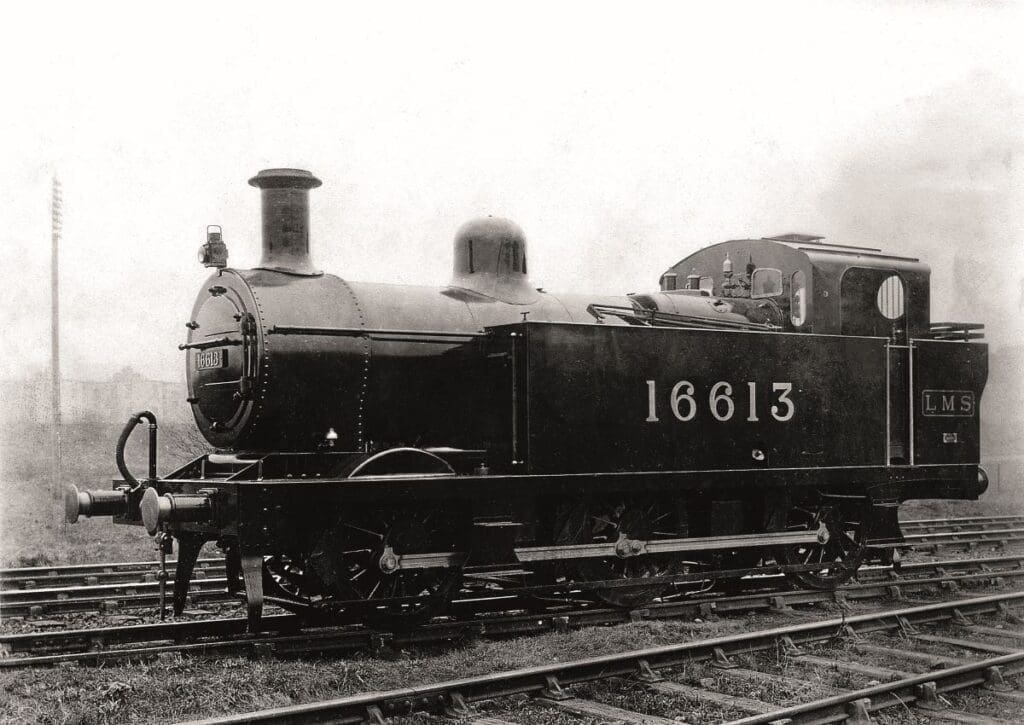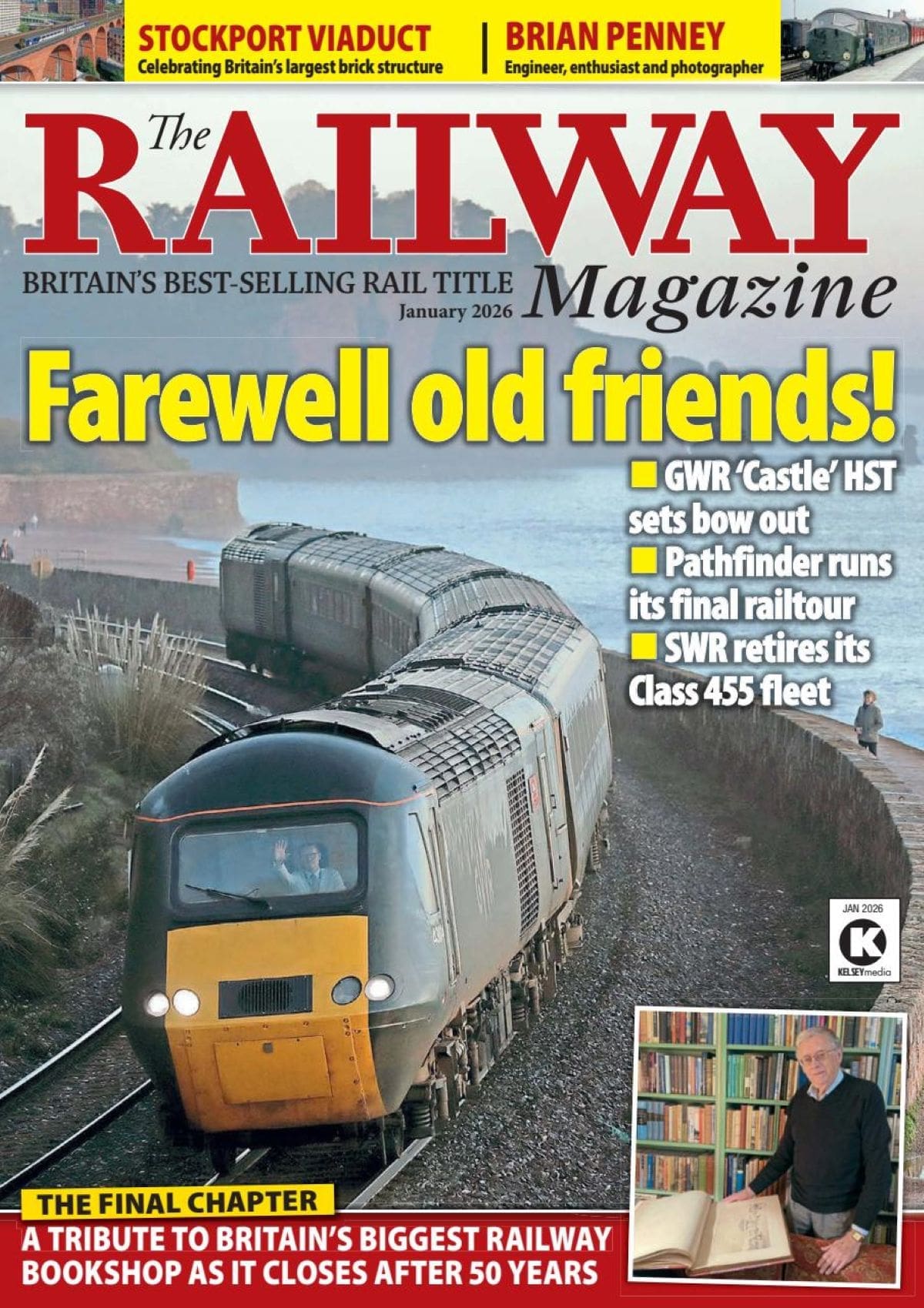For a brief period in the early 1920s, Glasgow-based engineering firm William Beardmore and Company had motorcycles and locomotives on its order books, resulting in this recently rediscovered press photo.
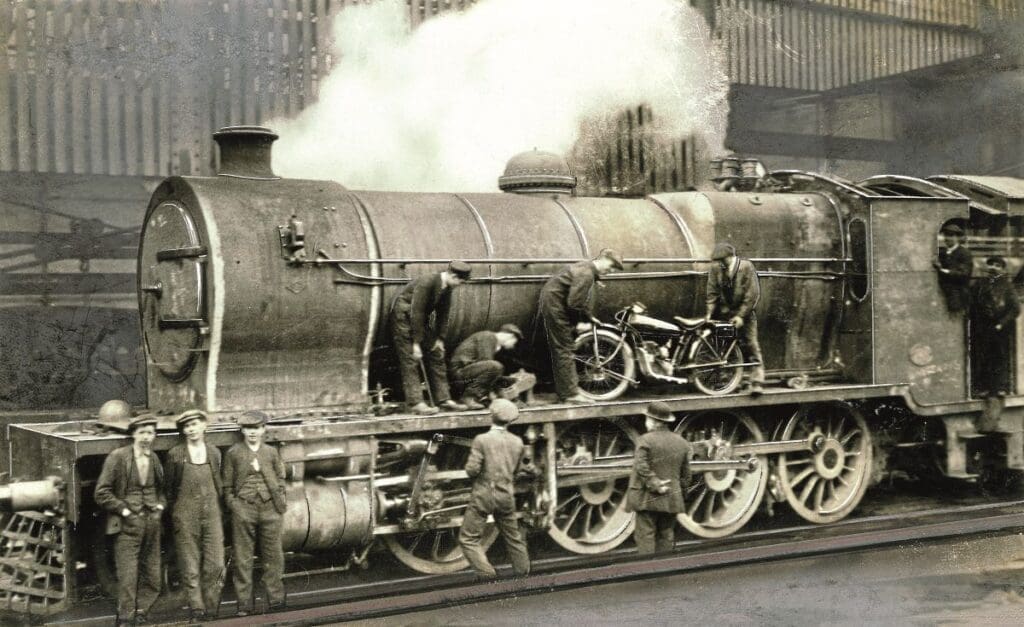
This fascinating photograph (above) was passed to us by James Robinson, editor of our sister title The Classic Motor Cycle, a publication that can trace its lineage back to the founding of The Motor Cycle in 1903, just six years after The Railway Magazine was established.
James discovered the photo while doing research in the magazine’s archives. It is presumably a publicity shot showing two products built by Glasgow-based engineering firm William Beardmore and Company in the early 1920s, namely a Beardmore Precision motorcycle and a HGS Class 2-8-0 loco for the 5ft 6in gauge East Indian Railway Company.
From the history of steam through to 21st century rail transport news, we have titles that cater for all rail enthusiasts. Covering diesels, modelling, steam and modern railways, check out our range of magazines and fantastic subscription offers.
The photo appeared in an issue of The Motor Cycle dated February 15, 1923, illustrating an article comparing the engineering and performance characteristics of locomotives and motorcycles – the conclusion of which, perhaps understandably given where it appeared, was that future locomotive development was “prohibited” whereas motorcycles had “almost unlimited scope”!
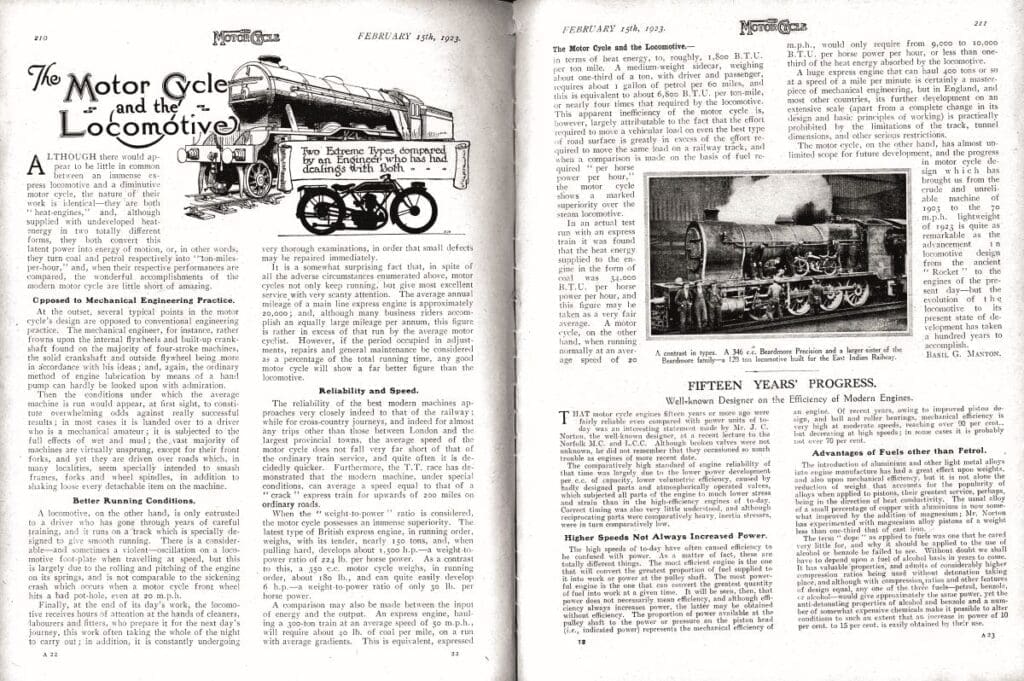
Company history
William Beardmore founded his company in 1886 at Parkhead Forge in the east of Glasgow, making steel products for the naval industry before moving into shipbuilding in 1900.
After the First World War however, the company struggled for orders and so diversified into other areas, including building locomotives, aircraft, motorcycles and other road vehicles. It was all mostly in vain, as much of the business had been closed by the time of Beardmore’s death in 1936 – although Parkhead Forge continued under various owners until 1983, the land now occupied by a shopping centre called The Forge.
Beardmore only manufactured motorcycles from 1919 to 1925. Its Precision Motorcycles brand was formed when the company teamed up with motorcycle engine manufacturer F E Baker, which was also struggling after the war. The first model featured a 350cc two-stroke engine, with others following in the power range 250 to 600cc. Baker regained the manufacturing rights in 1924 and started up his own company in Birmingham, but sold it on to James Cycle in 1930.
Beardmore’s locomotive manufacturing lasted slightly longer than motorcycles, from 1920 to 1930, based at a factory adjacent to its shipyard in Dalmuir on the Clyde, north-west of Glasgow. During this time, the company built around 400 locos, just over half of which were for use in Britain with the remainder for export, mostly to India.
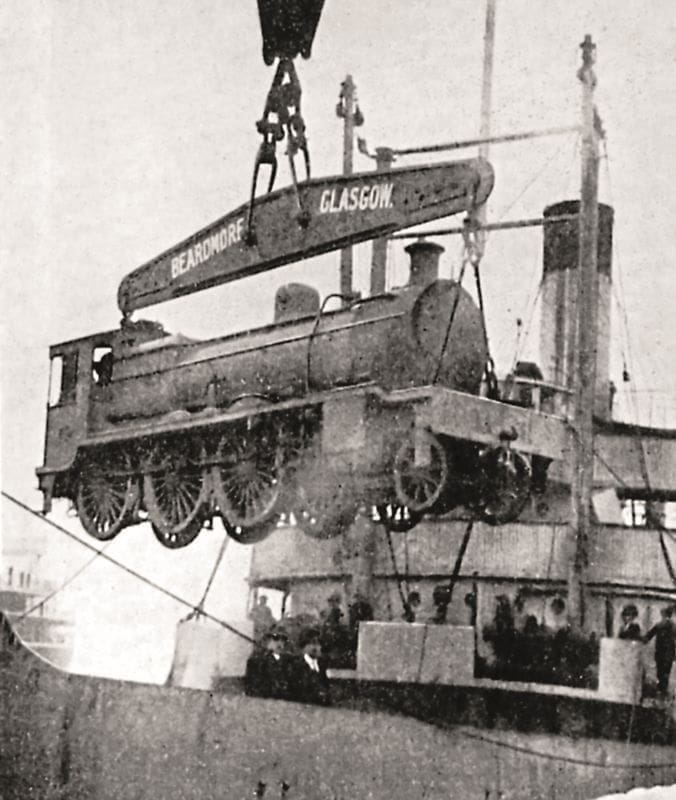
Two survivors
The British locos comprised 20 GER S69 Class 4-6-0s (later LNER ‘B12’); 91 LNWR/LMS Prince of Wales Class 4-6-0s; 20 GER L77 Class 0-6-2Ts (LNER ‘N7’); and 90 LMS 3F Class 0-6-0T ‘Jintys’. Although examples of the ‘B12’, ‘N7’ and ‘3F’ classes survive today, none of these were built by Beardmore.
To see a Beardmore-built locomotive today means going to India, where two survive. The first is HGS Class No. 26761, a 5ft 6in gauge 2-8-0 built in 1920 for the East India Railway and based today at the Regional Rail Museum at Howrah (near Kolkata); the second is XE Class No. 22541 (ex-No. 3634), a 5ft 6in gauge 2-8-2 built in 1930 for the East India Railway but now privately preserved at the Rewari Railway Heritage Museum (about 50 miles from Delhi).
